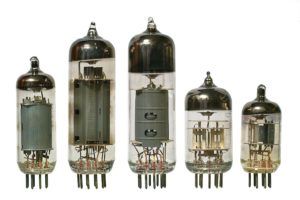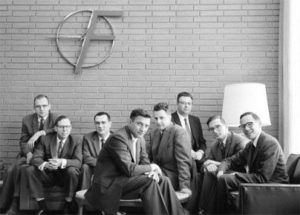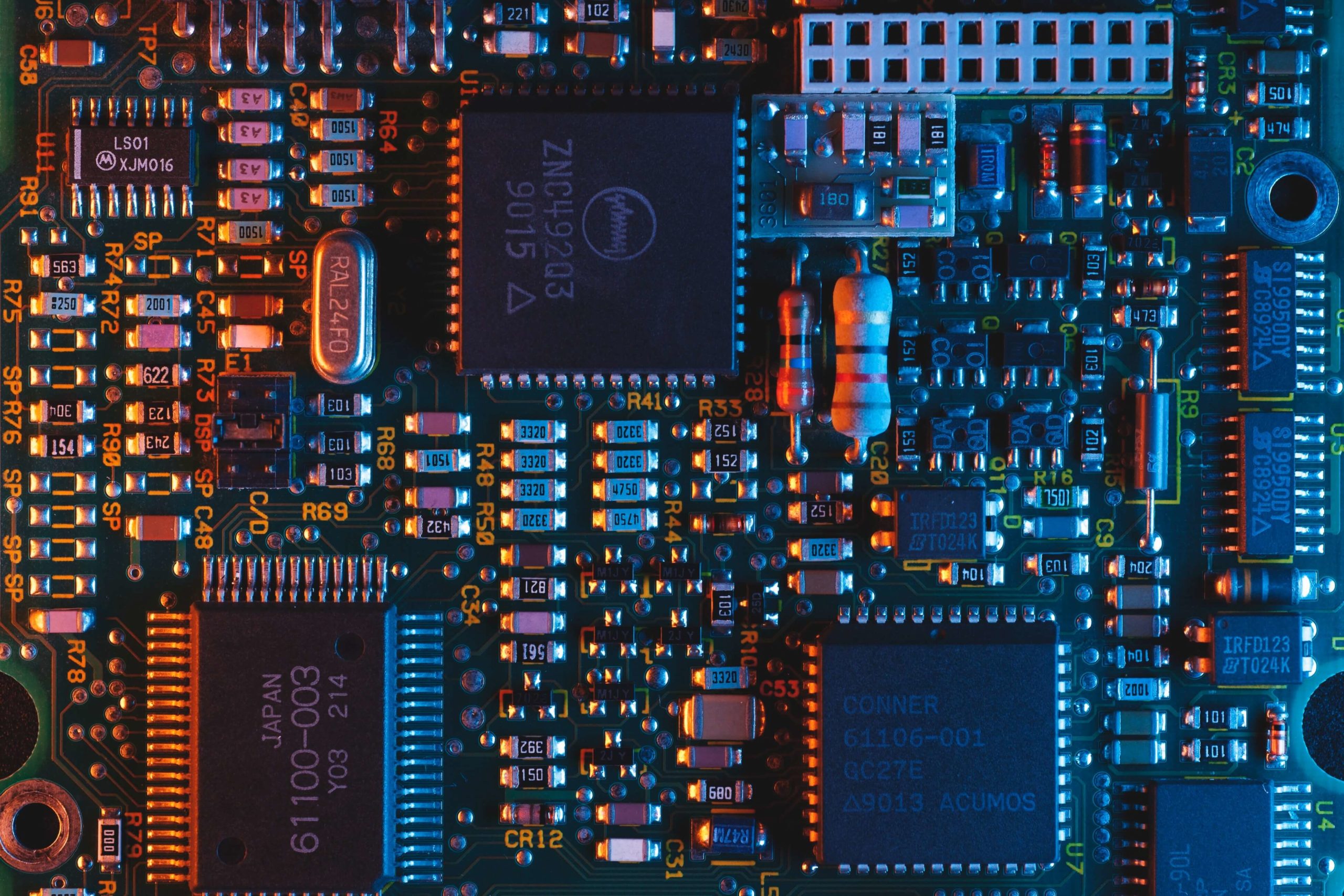People with some understanding of the technological world will know, more or less, what a transistor does. If a microprocessor is a computer’s brain, transistors are its neurons. They’re imperceptibly small components which, when cleverly arranged, give devices their smarts. While transistors are behind pretty much every technological advance of the last 60 years, few people know the surprisingly turbulent and contentious history of their invention.
In this first instalment in our #TBT blog series – where we take a look back at the interesting stories behind some of the world’s most important inventions – we delve into the Shakespearean tale of the transistor’s invention; one of genius, deceit, obsession, and madness.
Mr. Transistor
Our story starts just after World War II. The Allies have won. It’s time to get commercialism and materialism off the ground. American telecoms company AT&T has recently built the first transcontinental phone system. It’s an immense infrastructural and technological achievement. For the first time, two people thousands of miles apart can have a live, voice-to-voice conversation.
AT&T’s network relied on vacuum tube amplifiers to boost phone signals, allowing them to travel vast, cross-country distances. You’ve probably seen vacuum tubes in some vintage documentary about room-size computers. They were large, glass-cased devices that looked a little like lightbulbs (see below). Vacuum tubes had one major problem: they were awful. They used a lot of power, they produced a lot of heat, and they broke all the time. Three things you really don’t want from an electronic component.

AT&T understood that if they were going to turn their unprecedented achievement into a long-term economic and technical success, they needed to replace vacuum tubes with a new, hard-wearing component that hadn’t been invented yet.
Mervin Kelly, director of research at Bell Labs, AT&T’s R&D division, set about devising a replacement. Kelly’s idea was to create a new solid-state amplifier based on semiconductors, a recently-discovered branch of stable and flexible conductive materials. He enlisted three highly-regarded physicists, John Bardeen, Walter Brattain, and William Shockley, to help him find a solution. The team got to it. Bardeen and Brattain soon formed a close-knit and productive partnership, while Shockley oversaw their efforts from afar, working primarily at home in isolation.
In 1945 Shockley thought he had invented the first semiconductor amplifier – a transistor as it would later be renamed. But his design wouldn’t work. Puzzled, Shockley tasked Bardeen and Brattain to figure out why. They worked on the problem with their usual collaborative efficiency. They experimented with all kinds of solutions and workarounds. At one point, out of sheer desperation, they even tried dunking the whole prototype in water to see what would happen. Still, they failed to find the flaw in Shockley’s design. Pressure soon mounted on the team. Tensions arose. Their relationship with the demanding Shockley frayed.
The breakthrough
Finally, the breakthrough came. Bardeen uncovered a key insight about the electronic properties of crystals, ultimately unlocking a new branch of quantum mechanics called surface physics. Bardeen and Brattain used this insight to fix Shockley’s design, but they didn’t told Shockley himself of Bardeen’s discovery. They made a few tweaks and in December 1947 they finished construction on the world’s first point-contact transistor. Finally, they had developed a working upgrade to the vacuum tube amplifier.
While Bardeen and Brattain were praised by Bell Labs’ leadership, Shockley seethed (presumably in the murk of his personal laboratory). He was furious that he hadn’t been told about Bardeen’s breakthrough. Though his colleagues were receiving the plaudits, he saw himself as the transistor’s true inventor. Bardeen and Brattain had done nothing but overcome a small technical issue.
He petitioned Bell Labs’ leadership to file the patent for the point contact transistor under his name alone. When Bardeen and Brattain learned of Shockley’s manoeuvring, they confronted him and demanded Bell Labs include their names on the patent. The company agreed. The patent was to be shared by all three men.
But that wasn’t the end of the matter. As the company’s lawyers began compiling the application, they made a troubling discovery. Shockley’s original designs for the transistor were very similar to those described in an existing patent held by Austrian-Hungarian physicists Julius Lilienfeld. Bardeen and Brattain’s prototype, meanwhile, was nothing like Shockley’s designs. It therefore fell outside of the protection of Lilienfeld’s patent. The lawyers saw no other way forward. If the patent was to be accepted, it couldn’t carry Shockley’s name. On September 24 1948, Bell Labs filed a patent for the point-contact transistor, with Shockley’s name omitted altogether.
This turns of events pushed Shockley over the edge. He had gone from the transistor’s sole inventor to playing a peripheral role in somebody else’s creation. He couldn’t bear it. Racked with jealousy and anger, he barricaded himself in a hotel room in Chicago, and set about trying to beat Bardeen and Brattain’s design. It was there that he sketched plans for a far superior component: the junction transistor, a design that would become the archetype for the trillions of transistors powering modern computers.
Bell Labs was impressed. Appreciating its superiority, Bell Labs submitted a new patent for the junction transistor. Shockley was credited as the sole inventor. The patent was ratified in April 1950. Though it was filed earlier, Bardeen and Brattain’s patent was instituted 6 months later, in October of 1950, 68 years ago this month. In 1956, their work earned all three men the Nobel Prize for physics.
The birth of Silicon Valley
AT&T unveiled the junction transistor in 1948, shortly after the patent was filed. The company began mass production on the component and used it to upgrade their transcontinental network. Shockley was satisfied; he had bettered his rivals’ design and wrestled back his mantle as the undisputed genius behind the working transistor. Pleased though he was, this struggle had caused an irreparable crack between him and the rest of Bell Labs. The company kept Shockley at arms’ length, passing him over for promotions and leadership roles on other projects. Seeing the writing on the wall for his career, he left the company in 1955.
After a brief sabbatical, he set up his own company, the modestly named Shockley Semiconductor. He chose to headquarter it close to his elderly mother, who was then living in a quiet Californian town by the name of Palo Alto. Yes, it was Shockley Semiconductor that first brought Silicon to Silicon Valley.
Shockley recruited some of the country’s finest physicists and engineers to work for him. Together, they set about perfecting and commercialising his design. After some moderate success, Shockley’s acerbic nature drove a wedge between him and his team, just like it had at Bell Labs. He was unpredictable, arrogant, and a stir-crazy micromanager. He even subjected his colleagues to polygraph tests and invasive physiological screenings. Working for Shockley was supposed to be an ambitious physicist’s dream, but it proved to be a waking nightmare.
A number of Shockley’s team threatened to leave unless he was removed from power. But Shockley wouldn’t budge. In 1957, a little over a year since the company started, a group of eight of Shockley’s most promising proteges left to establish their own venture, Fairchild Semiconductor. The defections of these men earned them a nickname now famous in Silicon Valley lore: The Traitorous Eight.

Descent and Dissent
Under their stewardship, Fairchild took Bell Lab’s invention and created the first integrated circuit, the precursor to the microprocessor. With this decisive innovation, the Traitorous Eight transformed technology from a pursuit of might, of bigger bombs and more powerful motors, into a quest for intelligence. It’s difficult to summarise or encapsulate the magnitude of their combined achievements, but suffice it to say that together, they gave birth to the computer age.
Their influence didn’t stop there. Traitorous Eight luminaries Robert Noyce and Gordon Moore (author of Moore’s Law) founded microchip giant Intel, whose digital brains power so many of the world’s commercial and industrial computers. Victor Grinich became heavily involved in the development and commercialisation of RFID technology, which makes contactless payments possible. And Eugene Kleiner set up his own VC firm, Kleiner Perkins Caufield Byers, which was heavily involved in the creation and/or funding of hundreds of Silicon Valley startups like Amazon, AOL, Compaq, and Google.
Shockley carried on, though he never came close to the fortune or acclaim of his proteges. Shockley Semiconductor was eventually bought and closed down. In later life, Shockley began supporting unethical ideas like race-based eugenics and systematic sterilisations. He also called for the creation of an IQ-based sperm bank.
Silicon Valley has emancipated itself from Shockley’s tarnished legacy. While the original site of Shockley Semiconductor is commemorated with a small sign, few of the Valley’s constituents care to acknowledge his influence in its establishment. Instead, they honour the work and impact of the Traitorous Eight, which are more commonly known by a more affectionate identifier: the forefathers of Silicon Valley.
How not to lose friends and alienate people
Shockley was an obsessive and abusive figure. He deserves a villainous portrayal. The thing is, the tech industry is swarming with these kinds of characters. They don’t share his views on race and eugenics, of course, but they match his arrogance and his impatience. Steve Jobs, Bill Gates, Mark Zuckerberg, Travis Kalanick, they all seem to be cast in Shockley’s uncompromising mould. But where Shockley’s single-mindedness drove away his lieutenants and torpedoed his ambitions, this same quality seems to have earned his modern equivalents loyalty, wealth and acclaim.
Why? Perhaps because Shockley and Shockley Semiconductor arrived before the arrival of serious money into Silicon Valley. There were no unicorns and overnight billionaires in Shockley’s time. No facility for a few geeks to summon a multi-million dollar idea from a phone, a circuit board, and a protractor.
The Traitorous Eight were physicists first and foremost. Maybe they were motivated by the thrill of exploration – a thrill that Shockley’s heinous temperament extinguished from their work. Perhaps if Shockley Semiconductor had existed today, its erstwhile founder could have just thrown money at the problem, buying the Traitorous Eight’s loyalty with fatter paycheques and more lucrative share packages. Then again, perhaps not.
What can we learn from Shockley? The key lesson here is that irascibility, unkindness, and well-managed sociopathy probably won’t help your company be successful. Shockley had the financing, the vision, the team, and the know-how to build a company that, by all rights should have been at the very centre of the computer revolution. Instead, Shockley Semiconductor company failed. His team jumped ship. And the children of Silicon Valley want nothing to do with him.



